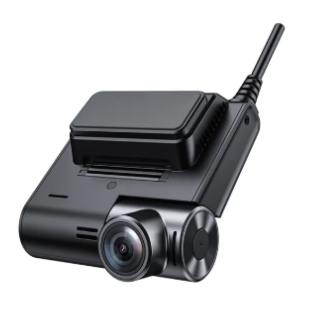Quid sunt ADAS dashcams ? (Indicium Emptoris 2025)
Functiones Principales Technologiae ADAS
ADAS-daschcams iungunt technicam adiutorii ad cursum cum functionibus ordinariis adregistandi, ut vehicula multo tutiora fiant. Plurimi modelli cum multis rebus veniunt, ut systemata monitionis collisionis, indicia defectus in alveo, et pedes detectores qui adiuvant minuere sinistros. NHTSA refert hanc technicam vere vias tutiores reddere, quod praebet monitiones de periculis quae praeteriri possunt. Haec instrumenta analysi facta in tempore reali quid circa vehiculum agitur, ut cursores monitiones accipiant cum aliquid periculosum videtur. Regulatio velocitatis adaptiva et freni automatici urgentes cum cammeris et radijs cooperantur ad vitanda impedimenta. Quamquam non perfectae solutiones, hae facultates profecto mutant rationem cursum populi et saepe meliores exitus in via producunt.
Quomodo ADAS Differt a Cameris Standardibus
ADAS-daschcams iamdiu non solum splendidissimae cameras in parietibus vitreis fixae sunt. Daschcams vulgares simpliciter omnia quae dum agitur eveniunt filmant, sed ADAS-modelli multis functionibus instructi sunt quae vere adiuvant ne accidant casus. Cogita res sicut cum vehiculum de via sua discedere incipit aut rei alicuius ante nimis appropinquat, haec sapientia instrumenta sonitum edent vel monitionem visu ostendent, ut attentionem ducis arripiant. Post tecta, viae per omnes generis sensorum et mathematicas complexitates perpensae sunt quas verisimiliter non opus est nobis intellegere. Quod refert est quod haec daschcams etiam cum aliis partibus vehiculi colloqui possunt, sicut systematis frenorum aut gubernationis, ut melius inter se cooperentur pro tutioribus itineribus. Prima differentia inter vulgares daschcams et ADAS-figuras? Unum quidem post casum quid accidit filmat, alterum autem conatur ne eveniat. Plurimi ducis qui haec emendata systemata installant, saepe fiduciam multo maiorem in via narrant, praesertim dum longis itineribus aut iniquis condicionibus atmosphaerae utuntur.
Characteristicas Essentialis in 2025 ADAS dashcams
resolutio 4K & Nocturna Visio Potentiata
Ad annum 2025, plerique nunc ADAS-daschecam erae cum 4K resolutione ut instrumento normativo veniunt. Claritas quam camerae praebent omnem differentiam facit cum post eventus vel incidentes visum revocatur. Cum tam nitidis imaginibus, investigatores minutias aspicere possunt quae in determinando quid re vera accidit interest. Nocturna visio etiam satis bona nacta est. Plurimae modernae daschecam sensibus infrarubris utuntur ut in tenebris melius videant, quod multum adiuvat in illis nocturnis navigationibus cum visibilitas deficit. Haec emendatio non solum video melius facit. Policiae factiones in hac specie footage confidunt ut loca collisionum et alia iter incidentia componant. Clarius depictiones minus controversias de eo qui culpae tenendus erat et celerius compositiones de iussionibus praesentant.
Systemata Detectionis Collisionis Potentata AI
Systemata detegendi collisiones, quae arte intellegentiae artificialis utuntur, in his clypeis auxiliariis motus administrandis progressis vehiculorum praesidio technologiae tutelae maxime profectum sunt. Haec systemata ea, quae circa vehiculum geruntur, inspiciunt et vere praedicere possunt quando impetus accidere possint antequam eveniant. Iis praemonstrant signa bene ante tempus et interdum etiam actiones sponte suscipiunt, ut impetus vitentur. Omnia haec fundantur in scientia computatrica perita, quae dum informationes de variis ducendis modis et de mutationibus in itineribus colligit, peritius in praedicandis periculis fit. Indagatae ostendunt loca, ubi haec systemata installata sunt, minus impetus habere. His, qui de tutela viarum solliciti sunt, hoc tempus reale praesentat, ut a reagendo ad incidentia postquam accidunt ad prohibendum ea antequam incipiant
Potentiae Recordationis Multi-Canalium
ADAS-daschcams cum inscriptione multicanali capiunt imagines ex pluribus partibus circumvecturam simul, quod dedit tutiorem defensionem ducis cum aliquid male geritur. Cum accidunt mala, haec systemata nota faciunt quae in fronte et post vehiculum geruntur eodem tempore. Investigatio ostendit angulos additivos lentis magni momenti esse in causis assecurativis aut iudicialibus, quod perfecte demonstrant quid acciderit sine lacunis. Imago completa iuvat duces se defendere iuridice post collisiones, ideoque multi periti hodie considerant inscriptionem multicanalem esse necessariam pro omnibus qui serio de salute in via curant.
Utilitates Camarum Dashboard ADAS pro Conductoribus Modernis
Notae Securitatis in Tempo Reali & Praeventio Accidentium
Oculi ante caput cum functionibus ADAS, quae praebent monita de periculo in tempore reali, vere viam tutiorem reddunt pro pluribus ducatoribus. Cum his systematis aliquid periculosum ante conspicitur, ducatori nuntiatur, ut cito reagere possit priusquam res deteriorentur. Ita cogita: si alterum vehiculum nimis appropinquat a tergo aut aliquis sine signo discessum e suo tramite incipit, systema monitum sonorum emittet. Cognitiones de vehiculis, quibus haec technica insunt, minorem numerum collisionum ostendunt, quod homines ad monita praevenienda re vere respondent. Ducatores in via multo confidentiores sentiunt se, cum sciant etiam suum vehiculum prospicere pro eis, quod eo fit, ut pauciores fiant casus.
Vantagia Assurance & Protectio Legalis
Principia tutelae incipiunt videre pretium ADAS tabularum et clientes minores sibi conscindere cum hisce systematis subpositis. Aliquot homines narrant sibi centena nummata in annuis scriptionibus peperisse tantummodo hac ratione adhibita. Cum accidentia eveniunt, commentarii video ex his tabulis verum thesaurum praebent ad causam rei inveniendam. Judices et calculatores fidem in his commentariis collocant ut controversias celerius dirimantur, non autem per menses trahantur. Scripta docent ut plures minore numero accidentium utantur, quod rationem habet cur judices et tutelae his in curiis graviter annumerent. Pro saecularibus ducatoribus, hoc significat meliorem occasionem ad tractationem aequalem post ictus sine sollicitudinibus solitis.
Elegere Cameram Dashboard ADAS Tuam pro Annum 2025
Convenientia cum Systematibus Securitatis Vehiculi
Cum elegeris praevideocamera ADAS, magni momenti est ut optime conveniat cum omnibus rebus iam praesentibus in vehiculo. Optima conveniantia significat praevideocamera posse communicare cum omnibus sensoribus in vehiculo et monitiones dare tempore opportuno. Tota copia melius videtur cum omnia inter se conspirant, tutius ita reddens navigationem dum diversa systemata conciliantur. Nunc complura maxima genera tabulas conveniantiae in tenebris ponunt ut homines sciant quae exemplaria ad sua vehicula aptentur. Haec tabulae saepe notiones de necessitatibus electricis et de versionibus programmatum quoque continent, ut vitentur difficultates futurae.
Solutiones Storagii & Integratio Nubis
Optinere optiones bene conservandi multum refert cum tractatur de omnibus imaginibus quae e systematibus iuvenionibus ducum veniunt. Optima administratio significat clavis praecavendis ut homines eas postea revocare possint cum opus fuerit. Adiectio functionum caeli hoc ulterius promovet quia duces videa celeriter inspicient ubicumque sint. Scire praecise quantum spatium dashcam vere habeat non solum iucundum est. Spatium disponibile directe afficit tempora inscriptionis et retentionis. Sine sufficiente spatio, momenta clavis possunt deleta esse priusquam quisquam eas inspiciat.
Considerationes Pro Modellis Budget versus Premium
Cum inter praebudet et praecipua praebudet dashcams eliguntur, tandem pendet ex eo quod quis vere eget e systemate custodia vehiculi sui. Meliora pretio optiones plerumque meliora technicae specificae, durabiliora materiae structurae, et praeterea ornatus sonorum praebent quae fortasse rationem reddunt cur magis constent. Cognitiones ostendunt quod bene qualitatis ADAS instructae dashcams saepe solvantur tempore per meliorem tutimetum et generaliter fiduciam ducis in via. Adspicientes omnes istos factores adiuvant homines invenire aliquid quod bene agat sine eo ut satis pecuniae amittatur, respondens ei quod pro pluribus ducibus diebusque convenit.
Futura Tendentia in Technologia Camarae ADAS
Integratio Communicationis V2X
Communicatio V2X pollicetur salutem viarum revocare, permittens ut automobilia inter se et cum infrastructura circumsistente colloquantur. Hac arte constituta, melior est conscius praesentis rei apud ducatores, qui celeriter de problematis traffici aut periculis ante se nuntiantur. Tempora reactionis mirifice breviantur, cum vehicula inter se de repentinis stationibus aut impedimentis monere possint antequam homines ea videant. Periti credunt maturum futurum esse ut casus notabiliter minuantur, cum haec ratio iam late utatur, praesertim quia fabricatores iam has artes in variis modis experguntur. Quod facit V2X vere mirabilem est quomodo cum technologiis iam constitutis, ut ADAS tabellae video, cooperet, creans compages interconecta tutelae quae ducatores in variis conditionibus viarum tutiores reddat.
Praedictiva Analytica & Sui-Learning AI
Ascensus artificialis intellectus discens per se est quod exspectare incipimus a systematibus auxiliis ducendi ad normas altiores (ADAS) tabellisque hisce diebus. Haec instrumenta sapientia praenuntiare possunt quae in via futura sint, monendo ducum de periculis ante quam eveniant. Licet technica nondum perfecta sint, tamen iuvant notare consuetudines periculosas ducendi et admonere ducum cum aliquid in via praevideatur. Plurimi ducum qui his systematibus utuntur, meliores evadunt in vitando discrimine locorum tempore. Secundum recentes investigationes in vehiculis publicis cum hac technica instructis, ratio casuum detrivit circiter 15% anno praeterito. Profecto nullum systema tutum est omnino, sed plures docti consentiunt quod dum tabellae technicae perpoliuntur, algorithmo machineae discendi integrando magnum partem agunt in viis tutioribus reddendis omnibus participibus.
FAQ
Quae est principalis differentia inter ADAS et standardes camaras dashboard?
Cameras dashboard ADAS integrent characteristicas proactive securitatis, ut collisionis praemonitiones, dum standardes camaras dashboard maxime recordationem footage gerunt.
Cur est resolution 4K importantis in camaras dashboard ADAS anno 2025?
resolutio 4K praebet video perspicuum, quod est necessarium ad recognoscendum particularia in incidentibus.
Quomodo prosunt camaras ADAS processibus assurance et legalibus?
Eae praebent testimonia essentialia in controversiis et possunt deducere ad minora premia assurance.
Quid est officium systematum AI-powered in camaras ADAS?
Systema AI-powered analyzant data ut praedicta collisiones, meliorem security per praematura monita emittenda.
Quomodo possum elegere conveniensem ADAS dashcam pro vehiculo meo?
Adhibe ad tuae rationis systemata tutelae et considera solutiones custodiae et terminos pecuniae.



